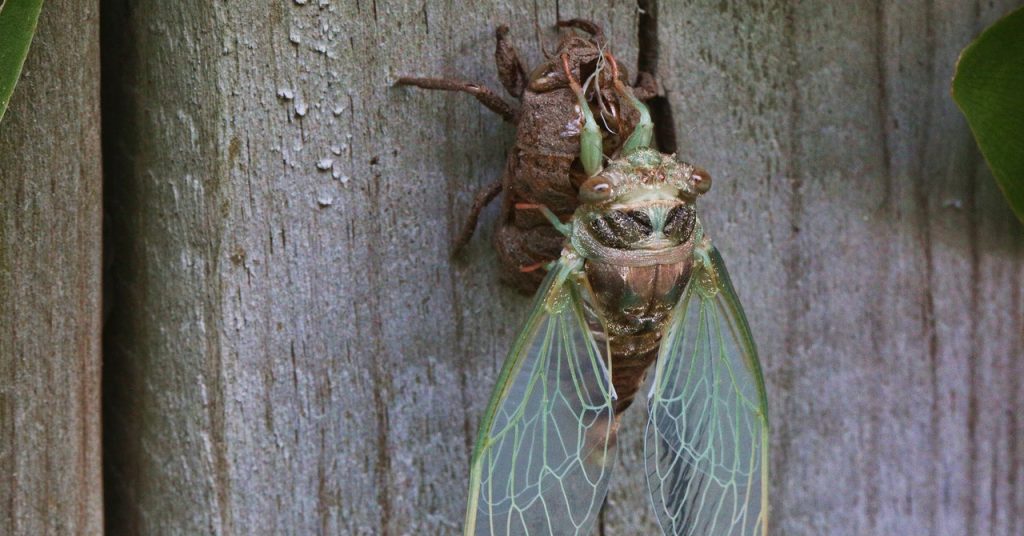Cicada Invasion: A Once-in-a-Generation Spectacle Hits Illinois
Get ready, Illinois residents: An astonishing number of cicadas are set to emerge, mate, and perish in a tree near you. Two broods of periodical cicadas—Brood XIX (13-year cycle) and Brood XIII (17-year cycle)—will surface together in central Illinois this summer, marking their first joint appearance in over two centuries. While humans may view them as a short-lived marvel and a deafening annoyance, many Midwestern animals, plants, and microbes consider them a rare delicacy, bringing new life to forests long after their demise.
The Cicada Life Cycle
Across the Midwest, from Nebraska to New York, 15 broods of periodical cicadas develop underground, quietly sipping watery sap from tree roots. After their respective 13 or 17-year cycles, countless inch-long adults synchronously dig their way out, emerging en masse for a month-long summer mating frenzy. Following copulation, they lay eggs in forest trees and die, allowing their tree-born offspring to drop to the forest floor and restart the cycle. Cicadas tend to stay close to their birthplace, resulting in each brood occupying a distinct region of the US. As Chris Simon, senior research scientist in ecology and evolutionary biology at the University of Connecticut, puts it, “They form a mosaic on the landscape.”
A Rare Occurrence
While it’s common for at least one of the 15 broods to emerge each year (not to be confused with their smaller annual counterparts), and even for two broods to surface simultaneously, what sets this event apart is the adjacency of the two broods. John Lill, insect ecologist at George Washington University, explains, “Illinois is going to be ground zero. From the very top to the very bottom of the state, it’s going to be covered in cicadas.” The last time these broods swarmed aboveground together, Thomas Jefferson was president, and the city of Chicago had yet to be established.
A Feast for Predators
Entomologists worldwide are eagerly anticipating the event, with flights booked for May. “We’re like cicada groupies,” Lill quips. He assures that this once-in-a-generation spectacle will surpass even April’s pink moon in terms of awe-inspiring natural phenomena. The emergence of billions of cicadas provides an easy, delectable prey for various creatures. As Lill puts it, “Periodical cicadas are sitting ducks.” They don’t bite, sting, or poison anyone and are unfazed by being handled. Generalist predators like dogs, raccoons, and birds will stuff themselves with this flying feast, barely making a dent in the cicada population. Lill explains that this is their secret weapon: In the absence of other defense mechanisms, “they just overwhelm predators by their sheer abundance.”
A Distraction for Predators
Just as an unexpected free meal might distract you from the leftovers in your fridge, this summer’s cicada emergence will divert predators from their usual prey. During the cicada invasion, songbirds will likely focus on the easy-to-catch insects, giving a much-needed break to other small creatures like caterpillars.
Citizen Science Opportunity
While the thought of billions of cicadas in your backyard might make your skin crawl, you can actively participate in this event. Researchers are calling for citizen scientists to submit photos of their local cicadas to help map the upcoming emergence. The Cicada Safari app, developed by Kritsky, received and verified 561,000 cicada pics during the 2021 Brood X emergence—he hopes to get even more this time around.
“This is an amazing natural phenomenon to wonder about,” Lill says, “not something to be afraid of.”

2 Comments
Nature’s way of saying, “Let the circle of life continue!
Isn’t it fascinating how cicadas turn a mass exit into a massive eco boost